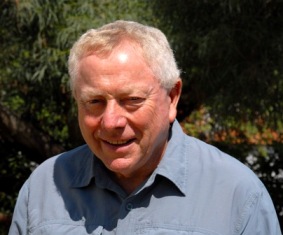Out with Papa-figos

Clive Viney - co-author of Algarve Wildlife - the natural year
Papa-figos (which literally translates as fig eater) is the Portuguese name for the Golden Oriole, one of the iconic visiting birds of the Algarve. Clive Viney is the co-author of Algarve Wildlife - the natural year, and now, under the guise of Papa-Figos, chronicles his finds, thoughts and feelings while walking in the Algarve countryside throughout the natural year. Look out for his regular updates, illustrated by his fellow co-author and photographer, Ray Tipper, who has kindly provided some of the photographs that illustrate these articles by clicking through from the links below.
Late October - First rain

Late Narcissus - Narcissus serotinus
For the first time in a week the sky was clear. Over the previous four days four inches of rain had fallen in Tavira. I was eager to discover how nature had reacted so I headed to Castro Marim. Inexplicably, some years ago the core area of the reserve, the working salinas at Cerro do Bufo, was declared by ICN off limits to birdwatchers. Accordingly, I had learnt to observe the reserve’s birdlife from the periphery.
A multitude of mobile homes covered the area around the entrance to the boardwalk at Altura – word must get around on the Internet as to where these wild campers would be unmolested. Lots of Crag Martins were overhead and continually small flocks of Linnets flew eastwards. The many gulls loafing on the beach included a few Audouin’s Gulls, while hundreds of snowy white Mediterranean Gulls flew westwards. Altura Tank held good numbers of Shoveler and Common Pochards but no surprises. Wintering White Wagtails had arrived. Aldeia Lake and the encompassing pine forest held only expected species. There were fewer fishermen on the Guadiana Breakwater than usual but feral cats were in abundance and were obviously being fed. A count of over fifty Oystercatchers on the sandbars was high and a Bar-tailed Godwit was unusual there. The area to the south of the old Aldeia Nova Aeródromo was unexpectedly dry with just one pool available to birds. However, among the large number of Eurasian Teal there was a distinctive first winter drake Blue-winged Teal, a rare trans-Atlantic wanderer. A Migratory Locust, Red-veined Darter dragonflies and pretty day-flying Crimson Speckled moths were noted. The Cerro do Bufo entrance gate is a good place to enjoy a packed lunch but not many birds were about, just a few Greater Flamingos and a flock of Black-tailed Godwits. Across the road, there is a circuit by a stream that rarely disappoints, whatever the time of day, and today was no exception. Two flocks of Northern Lapwings, and a loose flock of Meadow Pipits feeding tamely on the ground were my first of the winter. Star billing though went to an immaculate male Spanish Sparrow but the real treat was two patches of flowering Late Narcissus Narcissus serotinus. It had become hot and humid so I called it a day and went home for a beer.

Pomegranates
Behind Tavira there is a network of lanes and ancient donkey tracks that provide access to the countryside of yesteryear. Development is along the coast and inland, apart from the occasional restored farmhouse, much is as it was when a living was made from the land. What effect had the rain had here? The next morning I set out to answer the question. Apart from wretched barking dogs, mostly chained or caged, it was a delightful walk in superb autumn weather. Shy Robins and Song thrushes were everywhere. I was surprised that there was still no flow in the Ribeira de Assêca but in the lower tidal stretch the tide was up.
Apart from blooming Japanese Loquat Trees, the only flowers were the ubiquitous Aromatic Inula and the climber Common Smilax. Hedgerows were full of ripe pomegranates and quinces. These days nobody seems to be bothered with the bounteous fruit that falls ungathered. Pomegranates are an excellent salad ingredient and easily prepared. Quince jelly and quince jam must once have been popular country preparations. After all the word marmalade is apparently derived from marmelo the Portuguese word for quince.

Quince
Almost every hollow tree held one or two Moorish Geckos basking in the sun. Along the river road I found three Sharp-ribbed Newt roadkills. This was the first time that I’d found this species in the Sotavento. For whatever reason, they must have crossed this quiet road at night in large numbers. Other roadkills were an Iberian False Smooth Snake and, surprisingly, a large mantid Rivetina baetica. An Iberian Three-toed Skink was glimpsed as it vanished into wall-bound shrubbery.
In four hours ambling, my bird list was a reasonable 28 species. Notable were a Common Starling perched among a flock of Spotless Starlings, Thekla Larks, a flock of Spanish Sparrows, two Dartford Warblers seen well on thyme-covered slopes, a Common Buzzard and two Booted Eagles. Wherever I went, Iberian Azure-winged Magpies and Eurasian Jays were noisy and obvious. The only mammal was a distinctive Iberian Hare. A few butterflies enjoyed the sunshine – most were migrant Painted Ladies. It was a joy to be out and about.

